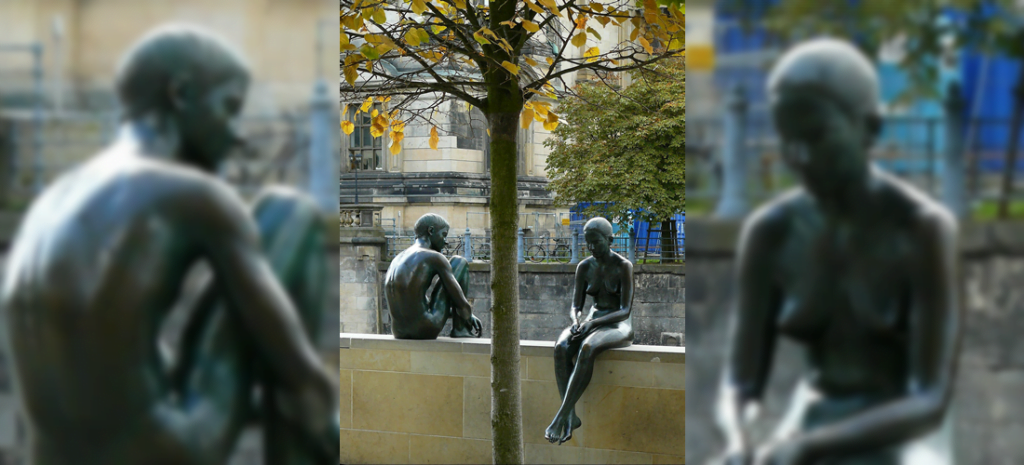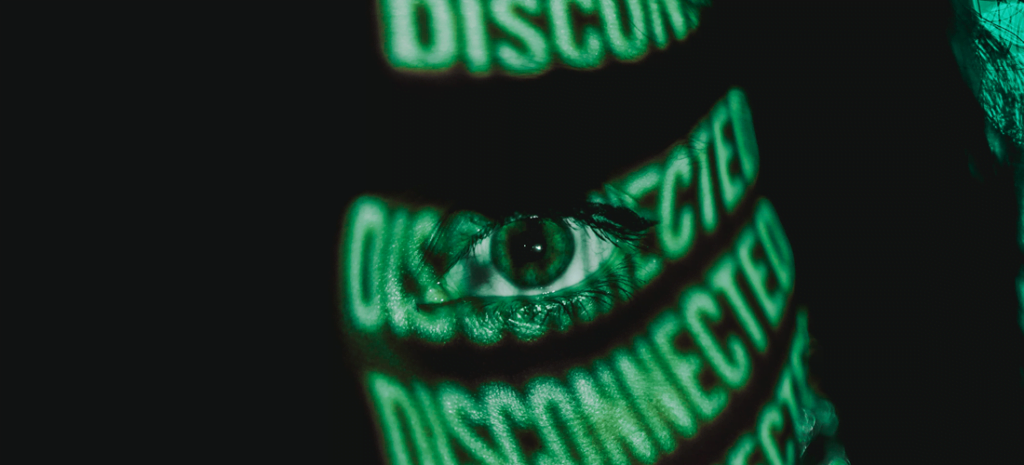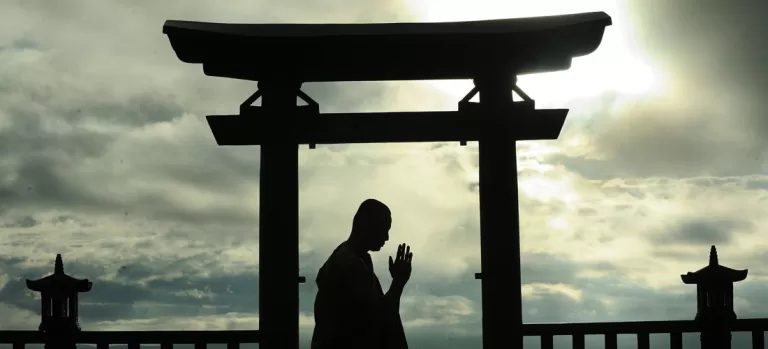Burnout, a state of mental and physical exhaustion caused by prolonged stress, is increasingly prevalent in today’s fast-paced, hyperconnected world. Characterized by feelings of overwhelm, chronic fatigue, and disconnection from one’s work, burnout can have serious impacts on both professional productivity and personal well-being. Let’s explore ways on how to heal from burnout through alone time.
In the midst of this relentless grind, alone time emerges as a powerful healing tool. Alone time is the intentional act of spending time by oneself, free from distractions and demands of others. It offers a sanctuary where we can pause, reflect, and recharge. Allowing for mental space to process emotions, generate new ideas, and regain lost energy. By incorporating periods of solitude into our routine, we create opportunities for deep healing and recovery from burnout.
What is Burnout?
Burnout is a state of emotional, physical, and mental exhaustion brought on by prolonged or chronic stress. It’s more than everyday stress. It’s a condition that leaves people feeling drained, unable to cope, and lacking the energy or motivation to carry on with their day-to-day tasks. Symptoms of burnout can be extensive, but often include constant fatigue and loss of motivation. It can include negative emotions such as cynicism or frustration, and even physical symptoms like headaches or sleep disturbances.
The causes of burnout are multifaceted and can vary greatly between individuals. However, common contributing factors often include an unmanageable workload, lack of control or autonomy in one’s work, a work-life imbalance, and a lack of social support. The societal expectation to always be “on” and available can also play a significant role in the development of burnout. Understanding these causes is the first step in healing and learning to prevent burnout in the future.
Steps to Heal From Burnout Through Alone Time
Healing from burnout through alone time is a crucial self-care strategy. Here are steps you can follow to effectively use alone time for recovery:
1. Recognize Burnout
Recognizing burnout is an imperative first step towards healing. By acknowledging these feelings, you’re taking a significant stride towards self-awareness, which is crucial in the journey towards recovery.
Failing to recognize burnout can lead to its symptoms becoming more severe over time. It can also result in the development of other health issues, such as depression or anxiety. Acknowledging burnout allows us to understand what our limits are. When to take a step back, and when to carve out crucial alone time for recovery and self-care.
It serves as a wake-up call that our current lifestyle or work habits are unsustainable and need to be addressed. Consequently, recognizing burnout is not just about healing the present, but also about preventing further burnout episodes in the future.
2. Prioritize Alone Time
Once you’ve recognized the signs of burnout, it’s essential to prioritize alone time in your daily routine. This involves consciously setting aside specific periods during your day for self-reflection, relaxation, and personal hobbies or interests. Alone time serves as a soothing break from the barrage of responsibilities and interactions we face daily. Offering us the chance to recharge our batteries and regain our mental and emotional equilibrium.
Alone time is not about isolation. It’s about creating an environment where you can focus on yourself without interruptions or distractions. It’s a time to disconnect from the digital world and focus on activities that bring you joy and peace. This could be anything from reading a book, taking a walk in nature, practicing mindfulness or meditation, or simply enjoying a quiet cup of coffee.
Remember, it’s not selfish to prioritize yourself. In fact, it’s a necessity for maintaining your mental health and preventing burnout. By dedicating time for self-care, you’re not only healing from burnout but also creating a more balanced and sustainable lifestyle. Self-care that can prevent future burnout episodes. So, be sure to make alone time a non-negotiable part of your daily routine.
3. Assess Your Current Schedule
Assessing your current schedule is a crucial step towards healing from burnout through alone time. This involves taking a close look at your daily activities to identify any periods of excessive stress. Try to pinpoint opportunities where you can incorporate alone time. Start by listing down your tasks and responsibilities – both personal and professional – and gauge the time and energy they require. Be honest with your assessment.
You may discover that your schedule is overloaded with commitments, leaving little to no space for yourself. Or, you might find that your day is filled with sporadic periods of heightened stress, with no downtime in between for relaxation and recovery. Once you’ve identified these areas, you can begin to make strategic changes. Perhaps you need to delegate certain tasks, decline non-essential commitments, or reorganize your day to include regular breaks for solitude.
Remember, your schedule should serve you, not the other way around. By taking control of your time and making a conscious effort to include periods of solitude, you’re stepping towards a healthier, more balanced lifestyle. This paves the way for your healing journey from burnout.
4. Set Boundaries
Setting boundaries is an essential step towards healing from burnout. Boundaries help you to define your personal space and time, ensuring that your needs are considered and respected. This could mean setting limits with your work hours to avoid overworking, communicating your availability to friends and family, or even setting boundaries with yourself in terms of how much news or social media content you consume.
Defining your boundaries might initially be challenging, especially if you’re accustomed to being always available or saying ‘yes’ to every request. Remember, it’s okay to say ‘no’ when you need to; this is about protecting your mental and emotional health. Over time, as you consistently enforce these boundaries, you’ll notice a decrease in stress levels and an increase in your alone time, which is crucial for your healing journey.
Remember, setting boundaries isn’t about being selfish. It’s about self-preservation. By setting and maintaining these boundaries, you’re creating the space you need to heal from burnout and build a healthier, more sustainable lifestyle.
5. Time Management
Time management is another powerful tool in your arsenal to heal from burnout through alone time. Managing your time effectively allows you to prioritize your tasks, reduce stress, and create the all-important solitude periods for rest and rejuvenation. Start by identifying and focusing on what truly matters, thus eliminating or delegating less important tasks. Utilize tools like calendars, planners, or digital apps to schedule and keep track of your activities.
Don’t forget to carve out “me-time” in your daily routine — this could be time spent reading, meditating, practicing a hobby, or just sitting quietly. This alone time is not an indulgence, but a necessity for your mental and emotional wellbeing. It provides you with a chance to pause, reflect, and recharge.
Remember, effective time management isn’t about cramming as many tasks into your day as possible. It’s about simplifying how you work, doing things faster, and relieving stress. By adopting sound time management practices, you can step towards a balanced lifestyle and continue your healing journey from burnout.
6. Disconnect from Technology
In our digital age, technology is always at our fingertips- creating a constant barrage of information and notifications. While technology certainly has its benefits, it’s equally important to disconnect from it to heal from burnout through alone time.
Constant connectivity can lead to an overwhelming sense of being ‘always on’ and available, adding to your stress levels. It’s crucial to realize that it’s okay to switch off your devices for a designated period each day. This digital detox allows you to escape from the constant buzz of emails, messages, and social media updates, giving your brain a chance to rest and recover.
Consider setting aside time each day when you disconnect entirely from technology. Use this time to engage in activities that help you relax and recharge– perhaps reading a book, walking in nature, or meditating. By disconnecting from technology regularly, you give yourself the solitude that is so integral to healing from burnout.
Remember, disconnecting doesn’t mean you’re missing out. Rather, you’re prioritizing your mental well-being, and, in doing so, you’re creating the space you need to heal and build resilience against future stressors.
7. Choose Meaningful Activities
When you’re on a path to heal from burnout through alone time, it’s important to choose meaningful activities that bring you joy and foster a sense of fulfillment. These activities don’t have to be grand or time-consuming. They can be simple things like cooking your favorite meal, journaling, painting, or even gardening. The key is to choose activities that allow you to express your creativity, stimulate your senses, and inspire a sense of accomplishment.
Engaging in meaningful activities gives your mind something to focus on other than work-related stress and helps in breaking the cycle of burnout. It serves as a gentle reminder that there’s more to life than just work and responsibilities. This balance can lead to a more positive outlook, rejuvenate your mind, and ultimately help in healing from burnout.
Remember, it’s your alone time. So choose activities that resonate with you, not what others suggest. It’s about cultivating self-awareness and self-love, and what’s meaningful to you might not be the same for someone else. By choosing and doing what you love, you are committing to caring for your well-being, which is the first step in healing from burnout.
8. Practice Mindfulness
Mindfulness involves being fully present and engaged in the current moment, a practice that can significantly aid in healing from burnout. When you’re alone, take a few moments each day to practice mindfulness. This could involve simply sitting in a quiet room, focusing on your breath, and letting each inhale and exhale guide you deeper into a state of relaxation. Or you could walk in nature, paying close attention to the sensory experiences around you – the sounds, smells, and sights.
Mindfulness allows you to step away from the constant whirl of thoughts and worries that often contribute to burnout. It encourages you to slow down and appreciate the now, which can help break the cycle of constant stress and anxiety. This practice also fosters self-awareness and self-regulation, two crucial aspects in managing stress and avoiding burnout.
Remember, mindfulness is not about achieving a certain state, but rather about observing and accepting your thoughts and feelings without judgment. It’s a practice that grows stronger with time, and even a few minutes each day can make a significant difference. By incorporating mindfulness into your alone time, you’re taking an active step in healing from burnout and creating a more balanced, stress-resilient self.
9. Self-Reflect
Self-reflection is a powerful tool in your journey to heal from burnout through alone time. It involves taking some time to honestly assess your feelings, thoughts, and behaviors. By intentionally setting aside time for introspection, you can gain a deeper understanding of what triggers your stress and how you respond to it.
Start by asking yourself some questions. How did you end up feeling burnt out? Are there certain tasks or environments that drain your energy more than others? What changes could make your life less stressful? It’s crucial to approach these questions with an open and non-judgmental mind – remember, the goal is not to criticize yourself, but to learn and grow.
Writing in a journal can be a helpful way to facilitate this process. Jotting down your thoughts and feelings can provide you with valuable insights and also serve as an emotional release. Over time, you may start to notice patterns or recurring themes in your entries, which can guide you in making necessary changes.
Self-reflection is not always comfortable, and sometimes, it can bring up difficult emotions. However, confronting these feelings is a vital step in healing from burnout. By understanding your personal stressors and reactions, you’re better equipped to manage them and prevent future burnout. Devoting time to self-reflection during your alone time is an investment in your well-being and future resilience.
10. Stay Open to Change
Being open to change is another essential step in healing from burnout during your alone time. Life is a constant ebb and flow, and it’s important to remember that nothing is static, not even our stressors or circumstances. It’s this understanding that can help pave the way for a more balanced life.
Embracing change can mean different things to different people. For some, it might involve breaking free from old habits and routines that contribute to burnout. For others, it might mean seeking new ways to relax and recharge, such as taking up a hobby or learning a new skill. It could also involve making significant changes in your professional or personal life, such as switching jobs, relocating, or redefining your relationships.
Change can be unsettling, but it’s often necessary for growth and healing. It forces us out of our comfort zone and challenges us to adapt and evolve. Through alone time, you can ponder on what changes are necessary in your life and create a plan to implement them. Remember, change doesn’t happen overnight, and it’s okay to take small steps towards a bigger goal. Staying open to it allows you to make space for new experiences and possibilities, ultimately fostering resilience and helping you heal from burnout.
11. Self-Compassion
Self-compassion is another crucial aspect of healing from burnout during your alone time. This involves treating yourself with the same kindness, understanding, and patience that you would extend to others. Just as we sympathize with a friend’s hardship, it’s essential to offer ourselves the same empathy when we’re going through tough times.
When you’re all alone, instead of being hard on yourself for feeling burnt out, understand that it’s okay to feel this way. It’s a part of life and doesn’t mean you’re weak or incapable. The ability to be self-compassionate can help you acknowledge your feelings of fatigue and stress without letting these feelings define you.
Practicing self-compassion may include mindfulness, maintaining a positive inner dialogue, and taking breaks when necessary. It’s about acknowledging your needs and giving yourself permission to rest and recharge. Remember, healing from burnout is a journey, not a race. Being patient with your process of recovery is a powerful act of self-compassion. By nurturing your mental and emotional well-being during your alone time, you lay the groundwork for healing from burnout.
12. Seek Support When Needed
While it’s essential to cultivate alone time for rejuvenation, it’s equally important to remember that you don’t have to navigate burnout all by yourself. Seeking support when needed can be a powerful tool in your journey to heal from burnout. You can lean on trusted friends or family, who can offer encouragement, a listening ear, and different perspectives. Sharing your feelings and experiences with them can be a great way to vent and feel understood.
If you’re comfortable doing so, you might also consider seeking professional help. Therapists and counselors can provide a safe, non-judgmental space for you to express your feelings and can also offer you strategies to manage stress and cope with burnout. They can guide you to find balance and develop self-care practices that work best for you.
Support groups, either in-person or online, can also be beneficial. They provide an opportunity to connect with others who are experiencing similar challenges. This can lessen feelings of isolation and provide comfort in knowing that you’re not alone in your struggle.
Remember, seeking support isn’t a sign of weakness but rather a testament to your strength in recognizing when you need help. Integrating this step with your alone time practices can help create a balanced approach towards healing from burnout, contributing to your overall well-being and resilience.
13. Monitor Progress
It’s highly beneficial to keep track of your progress as you navigate your path to heal from burnout through alone time. Setting aside moments to self-reflect can be a powerful tool in your healing journey. Consider keeping a journal where you can record your feelings each day, jot down thoughts, and note any small but meaningful improvements.
As time passes, you might start noticing patterns or triggers that lead to feelings of burnout. Understanding these patterns can help you adjust your approach, perhaps by avoiding certain stressors or by allocating more time for relaxation and self-care. Remember, the journey to healing takes time. Progress may sometimes be slow, and there may be days when you feel like you’re taking steps backward rather than forward. That’s completely normal.
Monitoring progress entails practicing patience and self-compassion. Celebrate the small victories and don’t be too hard on yourself on challenging days. The act of recording your journey can, in itself, be therapeutic and rewarding. Over time, you’ll be able to see how far you’ve come, providing a boost of motivation to continue on your path to healing from burnout.
Healing from burnout through alone time is a personalized journey. The key is to be mindful, proactive, and committed to making the necessary changes to prioritize your mental and emotional well-being. Remember that self-care is an ongoing process, and you should continue to integrate alone time into your life even after you’ve recovered from burnout to maintain your overall well-being.
Rejuvenating Activities for Alone Time
Alone time is a valuable opportunity to recharge and rejuvenate. Here are some activities you can engage in during your alone time:
- Meditation and Mindfulness:
Spend time meditating or practicing mindfulness to clear your mind, reduce stress, and enhance self-awareness. - Nature Walks or Hikes:
Connecting with nature can be incredibly rejuvenating. Go for a walk or hike in a park or nature reserve to enjoy the peace and tranquility of the outdoors. - Reading:
Escape into the world of a good book. Whether it’s fiction, non-fiction, or a self-help book, reading can be a great way to relax and learn. - Creative Writing or Journaling:
Express your thoughts, feelings, and creativity through writing. Keeping a journal or writing poetry can be a therapeutic and self-reflective experience. - Artistic Expression:
Engage in artistic activities like drawing, painting, or crafting. Creating art can be a form of self-expression and a way to relieve stress. - Yoga or Stretching:
Practice yoga or engage in a stretching routine to improve flexibility, reduce tension, and promote relaxation. - Bubble Bath or Spa Time:
Treat yourself to a soothing bubble bath or spa time at home. Light some candles, play calming music, and pamper yourself. - Photography:
Take your camera or smartphone and go for a photography walk. Capturing beautiful moments can be both relaxing and creatively satisfying. - Music and Music Appreciation:
Listen to your favorite music or explore new genres. Playing a musical instrument or even just dancing to your favorite tunes can be a joyful and revitalizing experience.
Remember that the most rejuvenating activities will vary from person to person, so it’s essential to choose activities that resonate with you and bring you a sense of fulfillment and relaxation during your alone time.
Closing Thoughts
Taking time for oneself is a powerful tool for combating burnout. The activities suggested in this article—reading, journaling, artistic expression, yoga, indulging in spa time, cooking, photography, and music—aren’t just hobbies, but therapeutic techniques to reconnect with yourself and reignite your passion for life.
Each one offers unique benefits and can contribute to relaxation, stress reduction, and self-expression. Remember, the effectiveness of these activities can vary among individuals, so it’s crucial to resonate with the tasks you choose. Embracing alone time isn’t about isolation but about taking care of your well-being, fostering personal growth, and ultimately healing from burnout.












